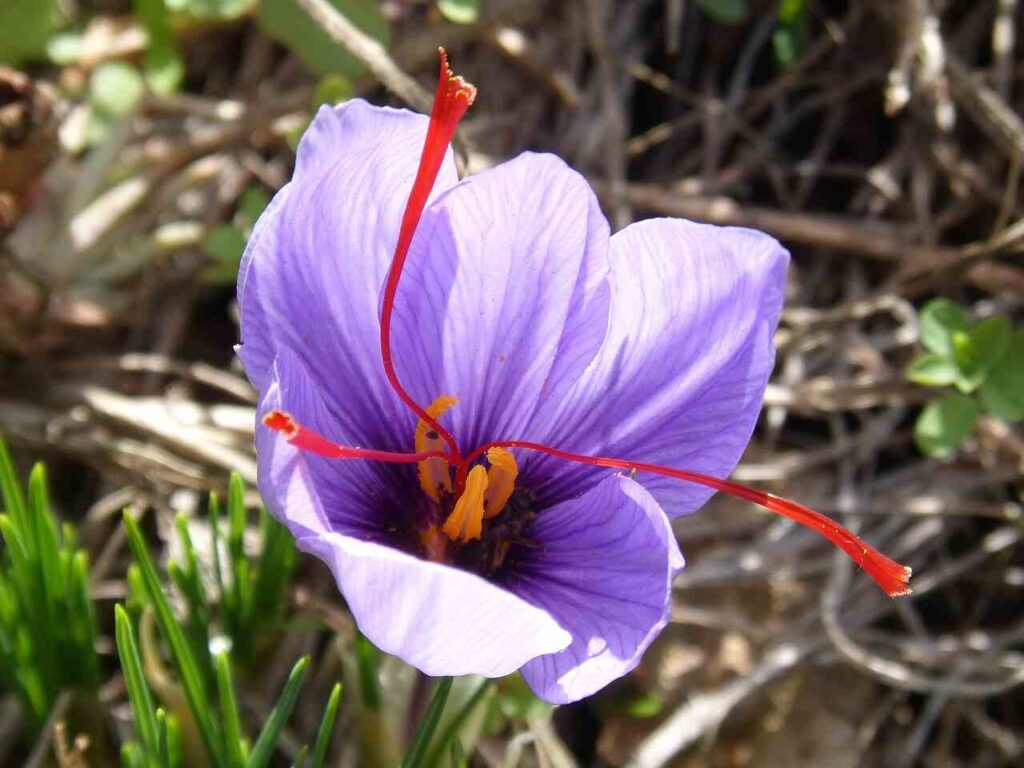# How Can You Grow Saffron in the US (2024)
Growing saffron in the US is possible and rewarding. This spice is known for its rich flavor, bright color, and medicinal properties. Saffron comes from the Crocus sativus flower, also known as the saffron crocus. This guide will help you understand how to grow saffron in the US in 2024.
## Understanding Saffron
Saffron is a spice derived from the flower of Crocus sativus. It’s mainly used for seasoning and coloring food. Saffron is expensive because it takes a lot of flowers to produce a small amount of spice. Each flower has three red stigmas, which are harvested and dried to make saffron.
### Climate and Location
Saffron grows best in areas with hot, dry summers and cool winters. This makes parts of the US suitable for saffron cultivation. Some ideal regions include California, Texas, Arizona, and parts of the Southeast.
## Step-by-Step Guide to Growing Saffron
### 1. Choose the Right Location
Select a location with well-draining soil. Saffron doesn’t like waterlogged soil. Raised beds or sandy soils are ideal. The location should receive full sun for most of the day.
### 2. Prepare the Soil
Saffron requires fertile soil. You can improve your soil by adding organic matter like compost. Ensure the pH level of the soil is between 6 and 8. Test your soil and adjust accordingly.
### 3. Buy Saffron Corms
Saffron is grown from corms, not seeds. Purchase high-quality corms from reputable suppliers. The best time to plant corms is late summer or early fall.
### 4. Planting Saffron Corms
Plant the corms about 3-4 inches deep and 6 inches apart. Ensure the pointed end of the corm faces up. Water the corms immediately after planting.
### 5. Watering
Saffron needs regular watering, especially during the growing season. However, avoid overwatering. Let the soil dry out between watering sessions.
### 6. Mulching
Mulch around the plants to retain moisture and control weeds. Straw or wood chips work well. Mulching also protects the corms during winter.
### 7. Fertilizing
Use a balanced fertilizer to feed your saffron plants. Apply fertilizer in early spring when new growth begins. Avoid excessive nitrogen, as it can reduce flower production.
### 8. Pest and Disease Control
Saffron is relatively pest-free. However, watch out for rodents and birds, which might dig up the corms. Use netting or barriers to protect your plants.
### 9. Harvesting
Saffron flowers bloom in late fall. Harvest the flowers early in the morning when they are fully open. Carefully pluck the red stigmas from each flower. Dry the stigmas in a warm, dry place for a few days.
### 10. Storing Saffron
Store dried saffron in an airtight container away from light and moisture. Properly stored saffron can last for several years.
## Benefits of Growing Saffron
Growing saffron can be profitable and sustainable. It’s a high-value crop with many uses. Saffron is used in cooking, medicine, and even cosmetics. By growing saffron, you can enjoy fresh, high-quality spice and potentially sell it for a good profit.
## Common Questions About Growing Saffron
### Can Saffron Be Grown Indoors?
Yes, saffron can be grown indoors in pots. Ensure the pots have good drainage and are placed in a sunny spot. Follow the same planting and care instructions as for outdoor cultivation.
### How Much Saffron Can You Harvest?
Each saffron crocus produces three stigmas. You need about 150 flowers to produce one gram of dried saffron. The yield can vary based on growing conditions and plant health.
### What Are the Ideal Growing Conditions?
Saffron thrives in areas with well-drained soil, full sun, and a climate with hot summers and cool winters. The soil pH should be between 6 and 8. Saffron prefers dry conditions and doesn’t tolerate waterlogged soil.
### How Long Does It Take to Grow Saffron?
Saffron corms planted in late summer will flower in fall. The entire growing cycle, from planting to harvest, takes about 8-10 weeks.
## Conclusion
Growing saffron in the US is feasible and can be very rewarding. By choosing the right location, preparing your soil, and following proper planting and care techniques, you can successfully cultivate this valuable spice. Saffron not only enhances the flavor and color of dishes but also offers numerous health benefits. With patience and attention, you can grow your own saffron and enjoy its rich rewards.


